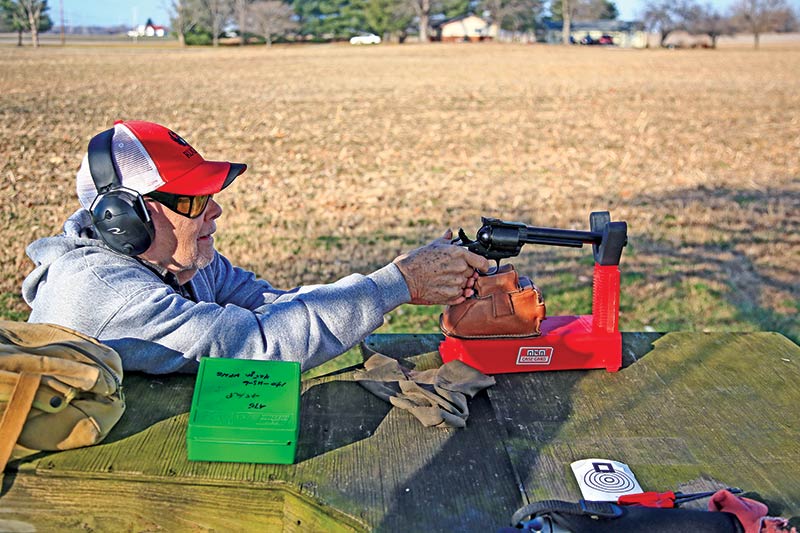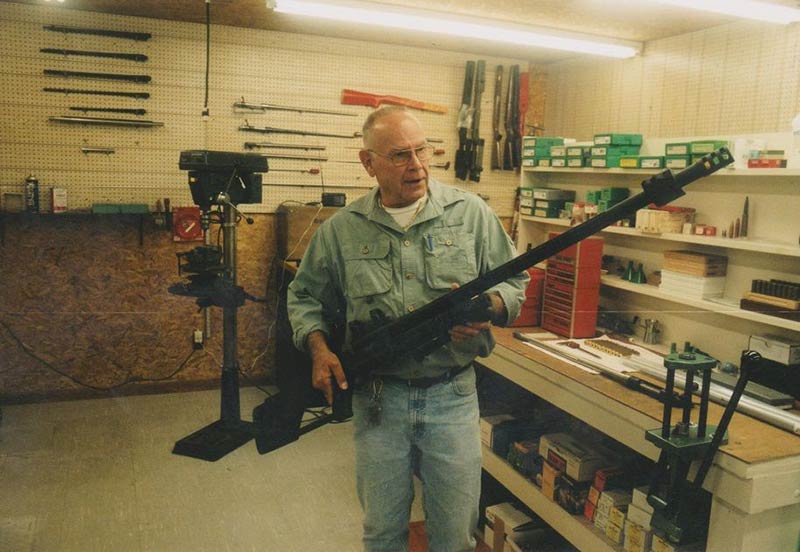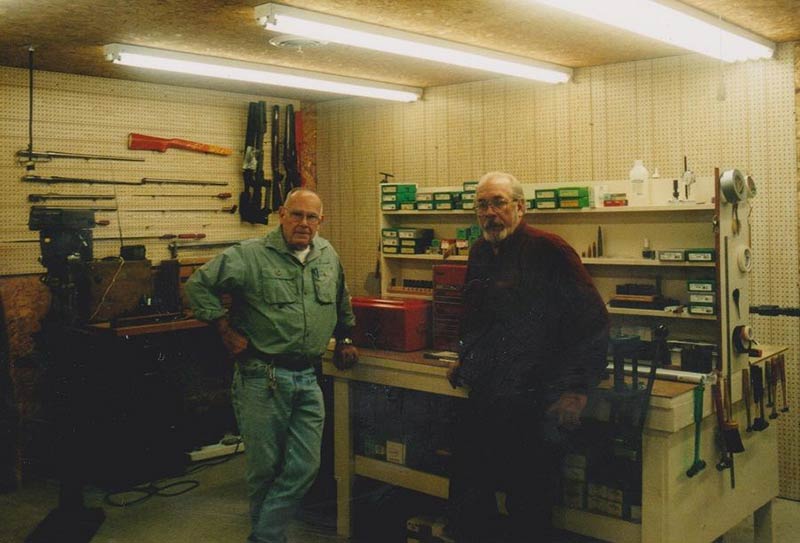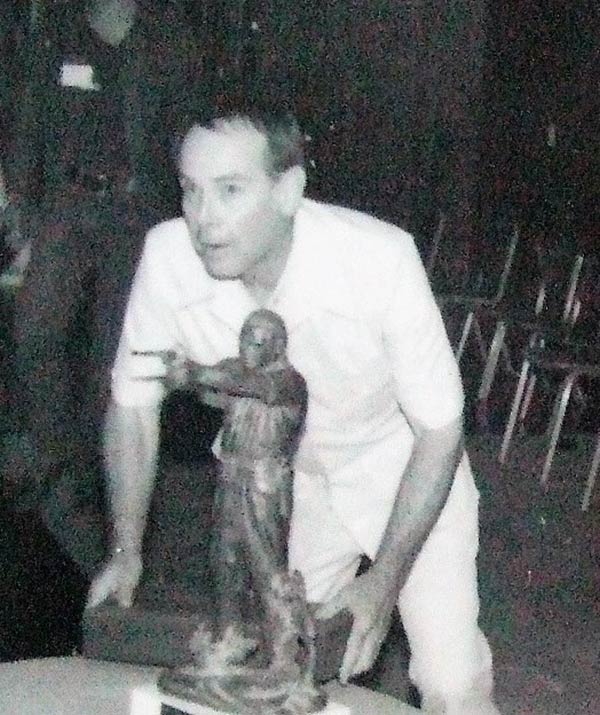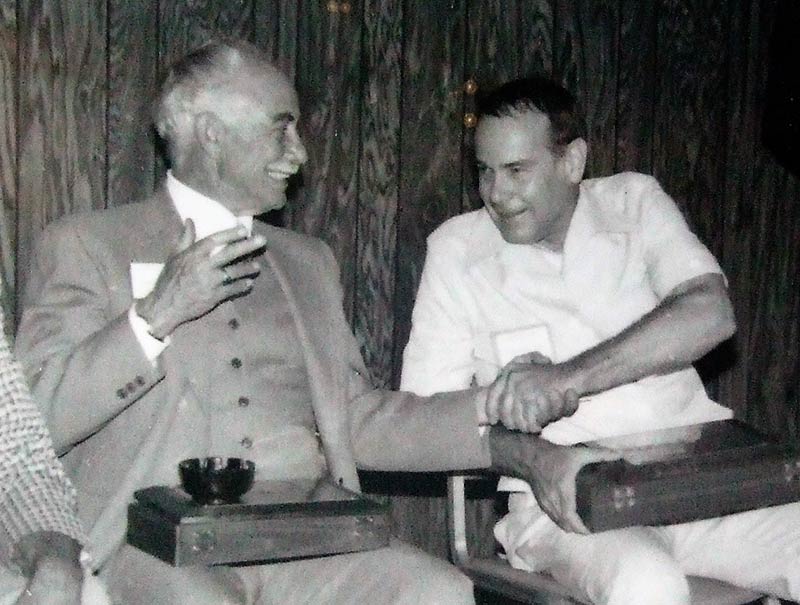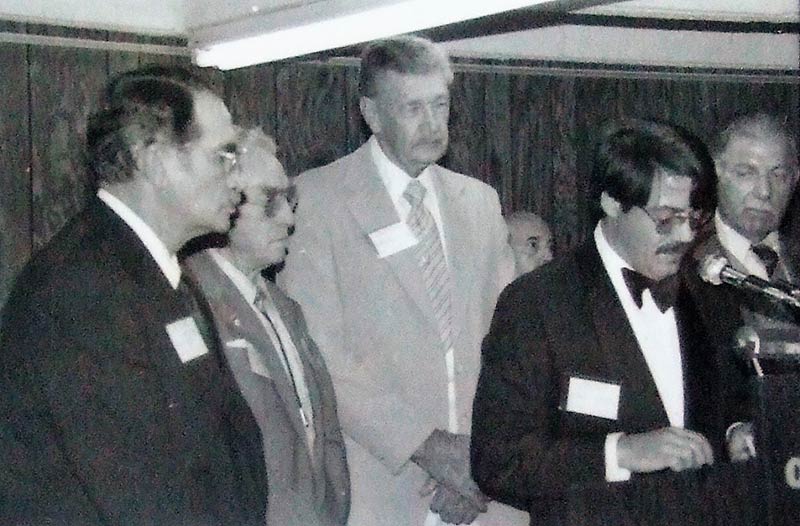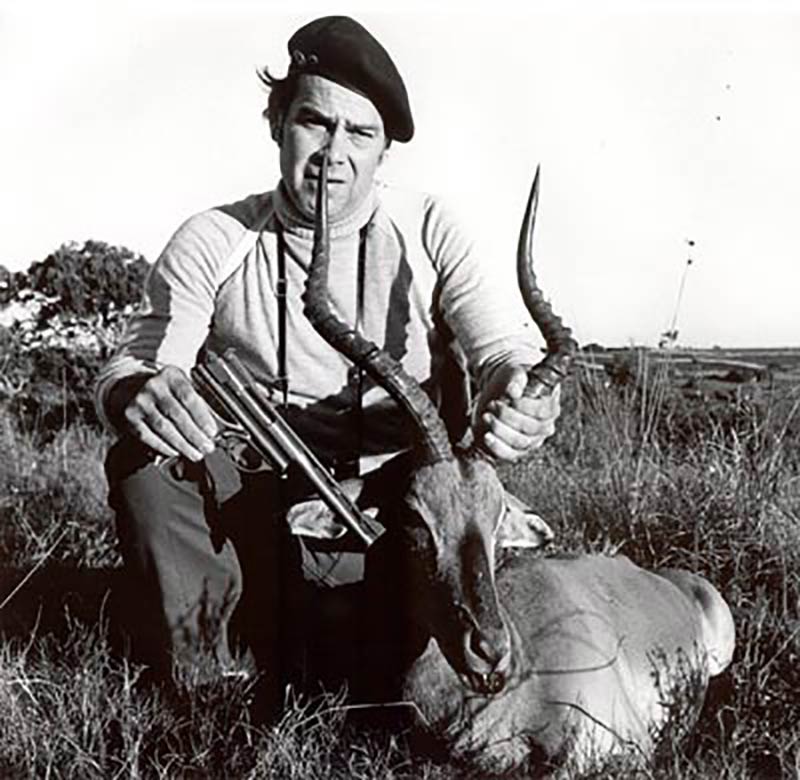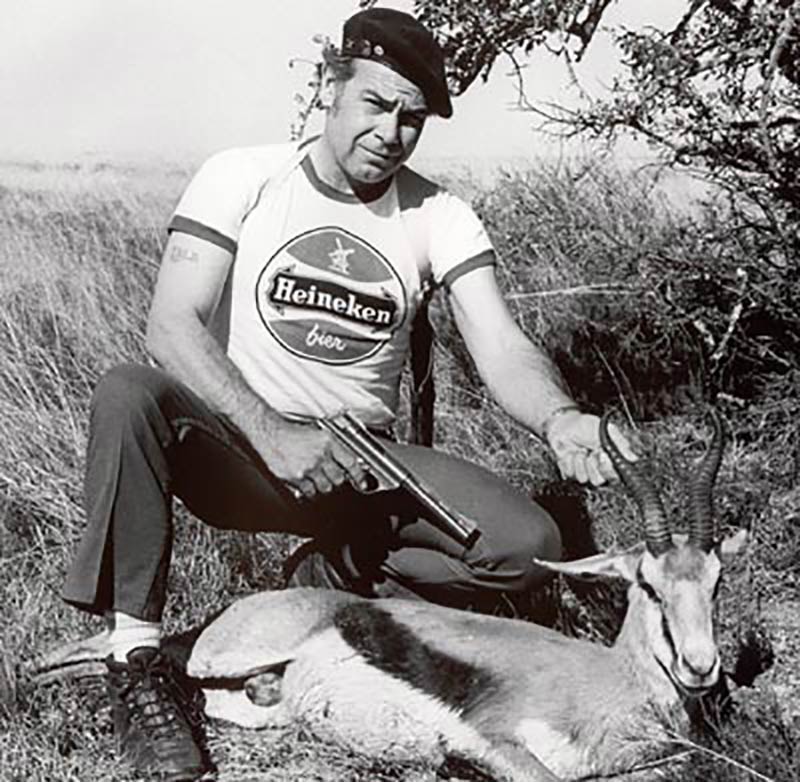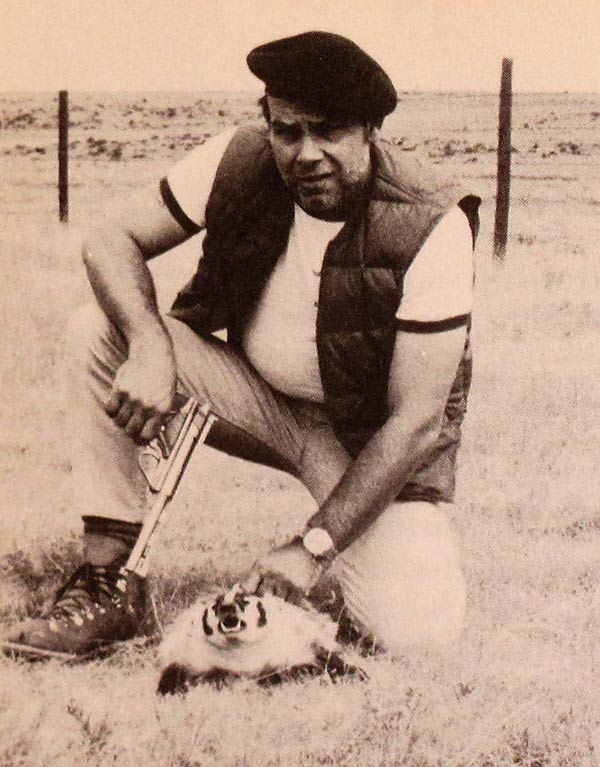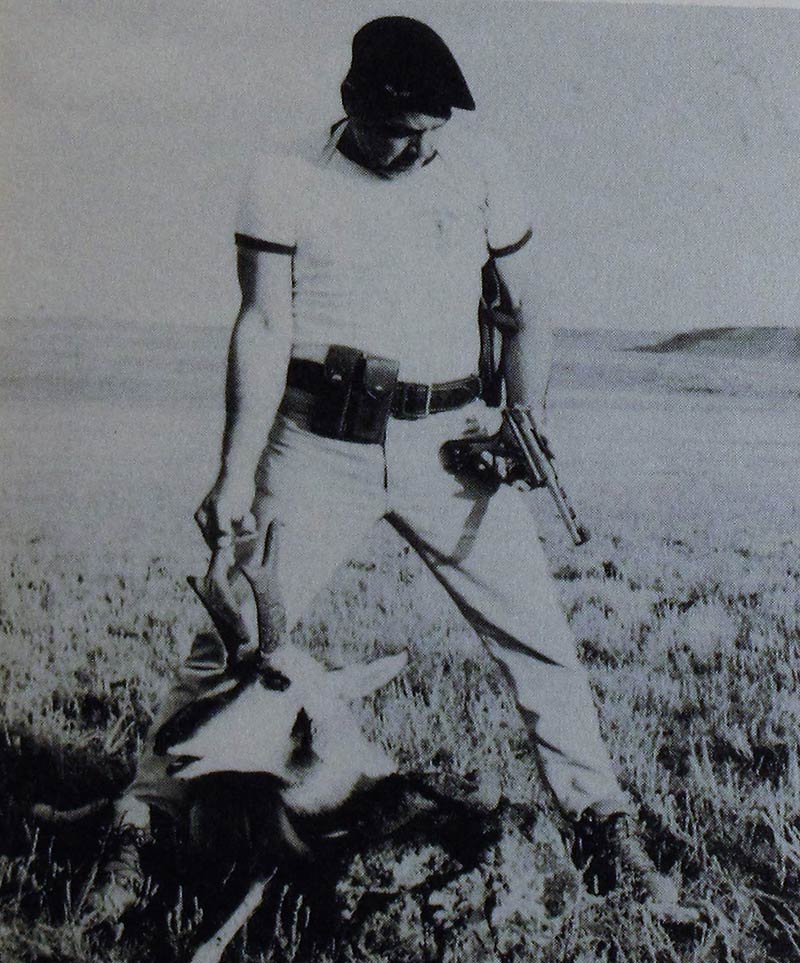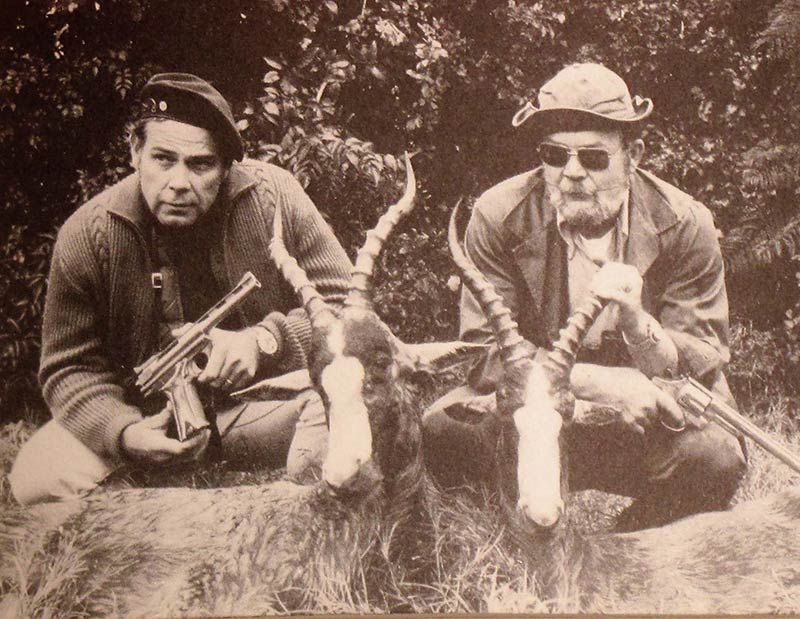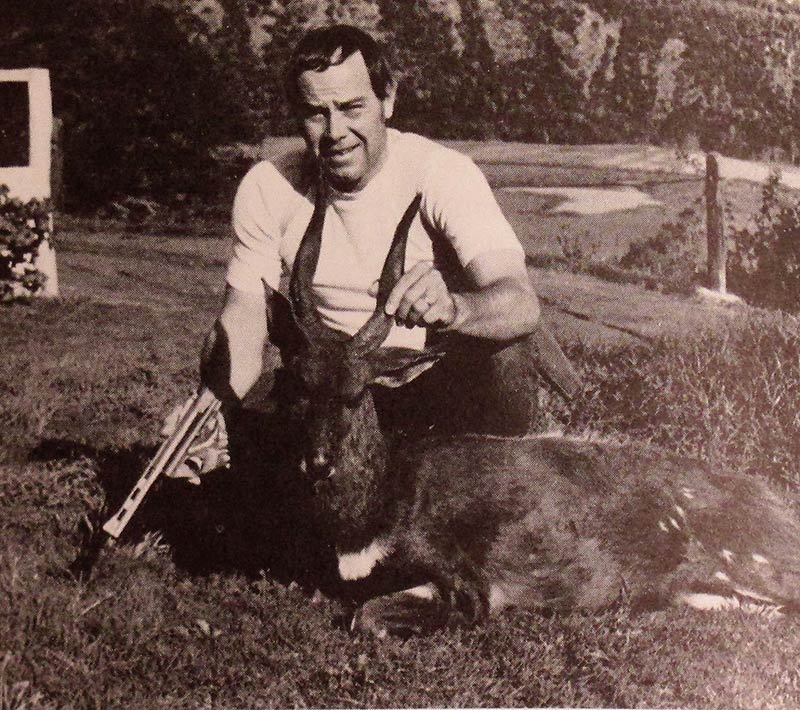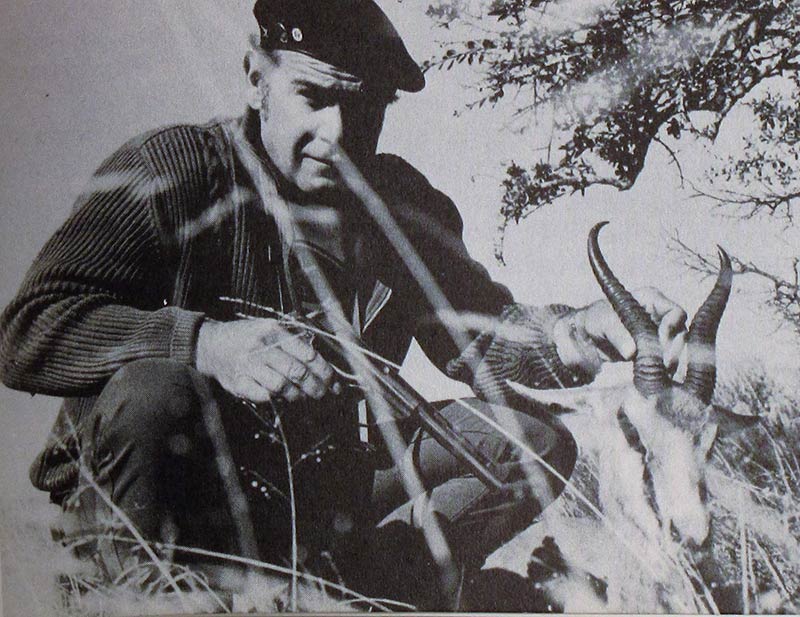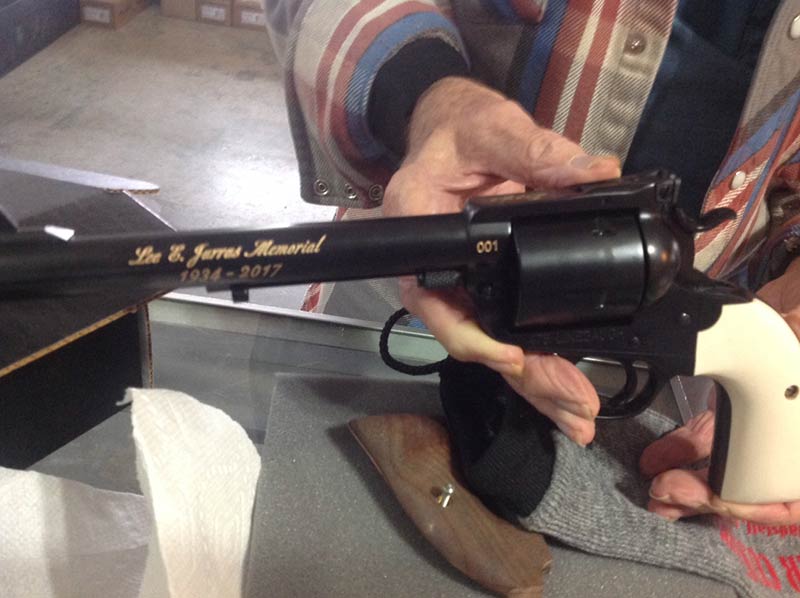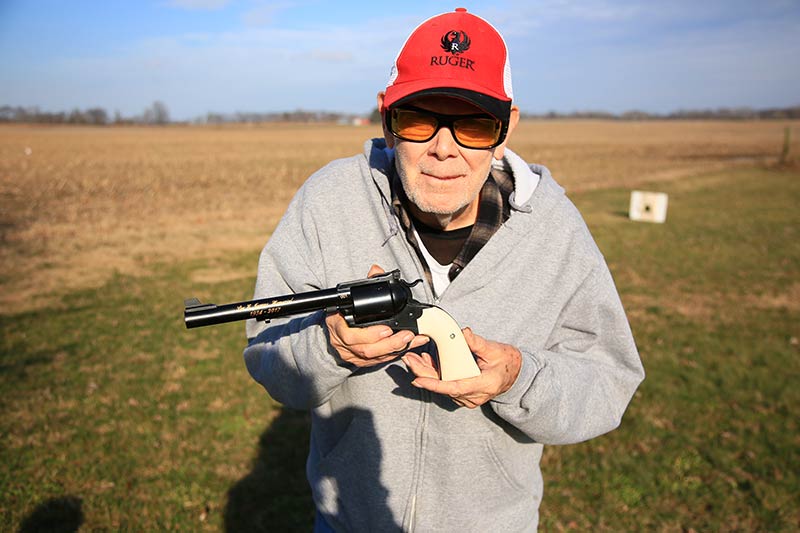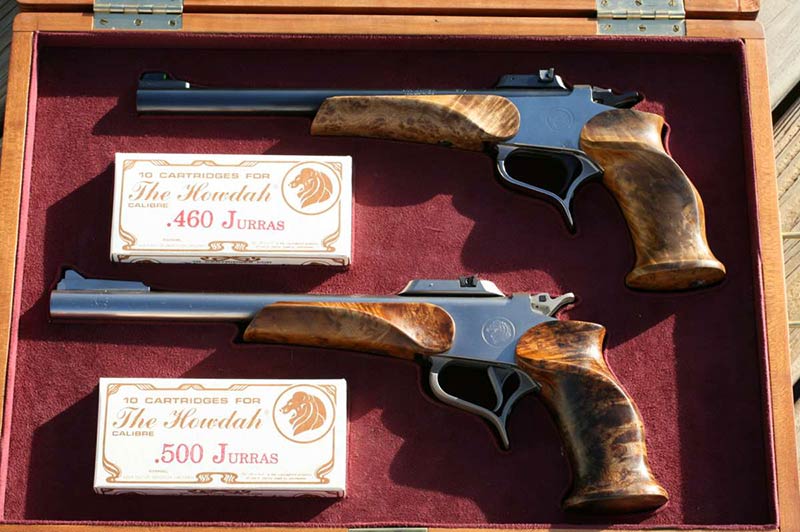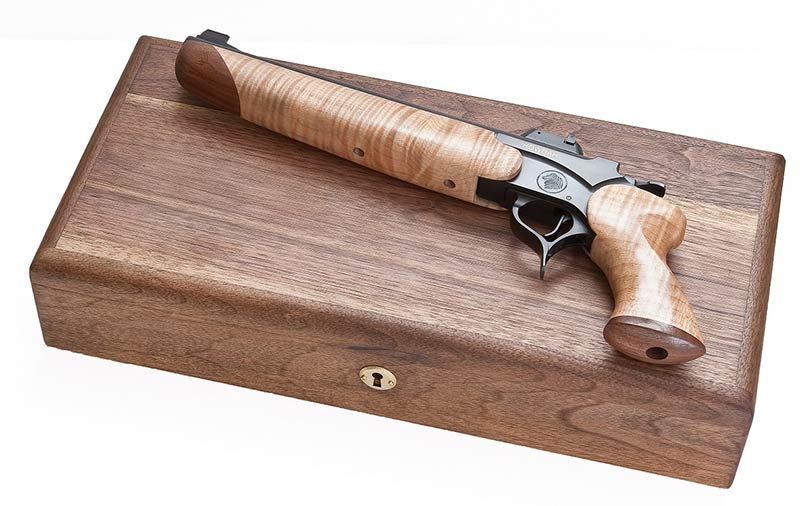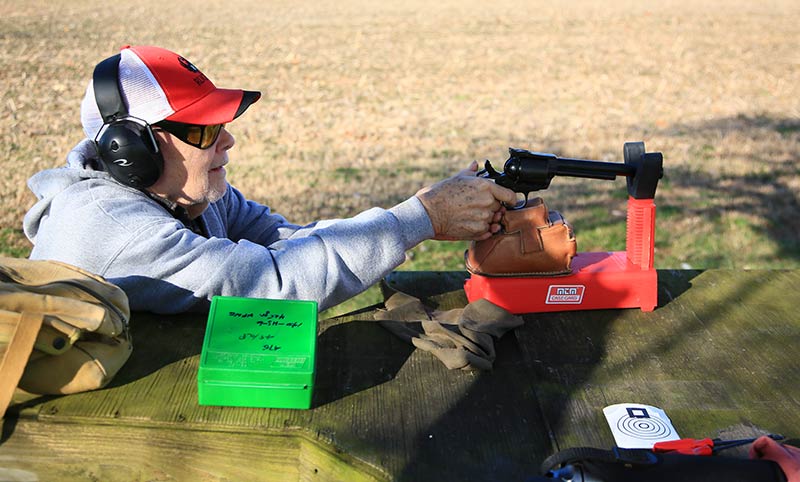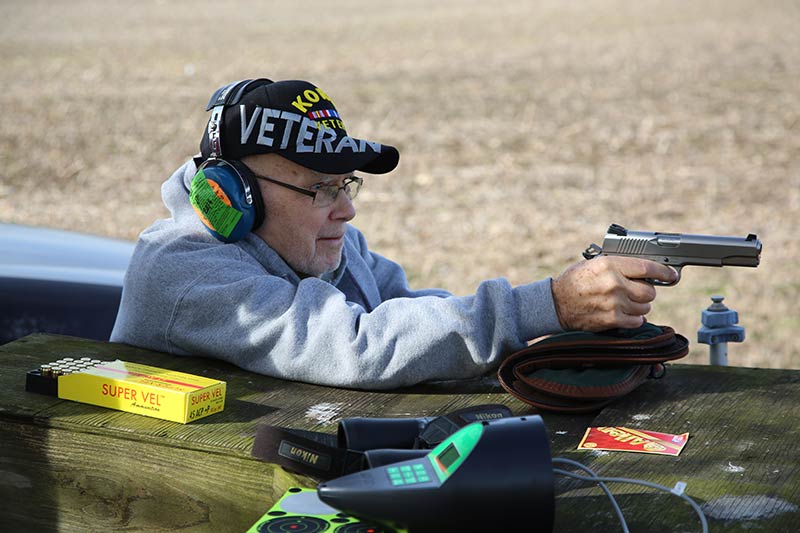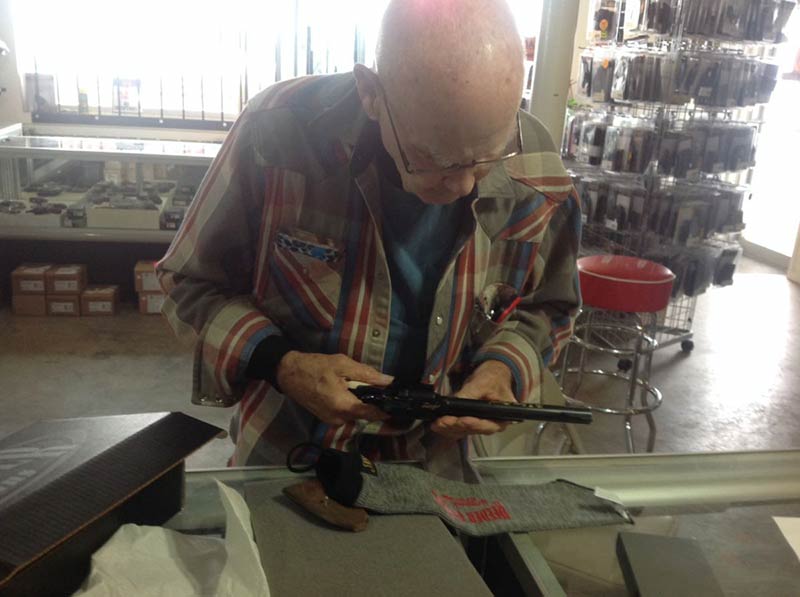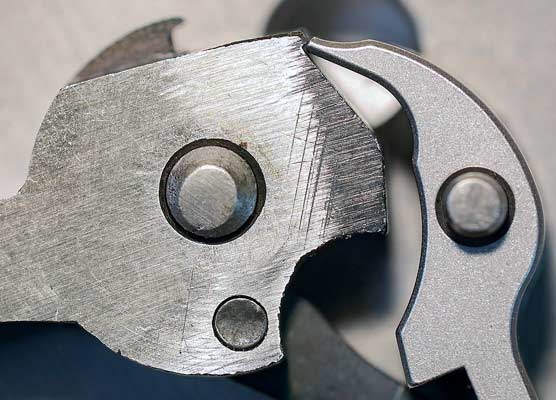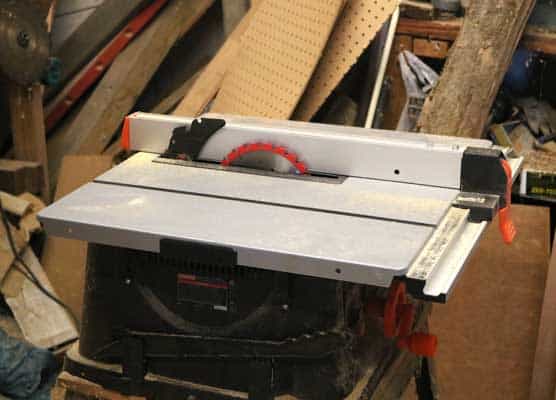Lee Jurras:
Outstanding American Handgunner
Regular readers know of my undying affection for the truly Classic Sixguns; those coming forth in the first two thirds of the last century and earlier. Sixguns with names, not numbers. It also carries over to people, Real Classic People, most of whom were born before WWII and earlier. There aren’t many of them left anymore. Those I learned from, men such as Elmer Keith, Jeff Cooper, Skeeter Skelton, Bill Jordan, Rex Applegate and others are all gone. Those left can be counted on the fingers of one hand. One of those men, Lee Jurras, only recently left us, but I was proud to be able to interview him before his passing. All of the Classic Handgunners contributed much to the rest of us, however very few can match the legacy of my friend Lee Jurras.
Thanks to Mike Hatfield, Lee’s local gun dealer back in Indiana, I was able to interview Lee by email. Mike also provided much information in pictures and also kept me informed how Lee was doing as his health declined.
I first met Lee through the Outstanding American Handgunner Awards Foundation (OAHAF) which he founded in 1973. This foundation was set up to recognize those who had contributed much to the world of handgunning. Lee served as the first chairman and was followed in succession over the years by other industry friends. Lee personally commissioned and paid for the first 10 bronze statues awarded to the winners each year. Over the years the list of winners reads like a virtual Who’s-Who of handgunning. The first winner, of course, in 1973, was Elmer Keith.
It was my good pleasure to serve as chairman of this fine organization from 1992 to 1999, when due to many things (such as lack of industry support) we decided to close the awards. Lee’s dream was shut down and he was very disappointed.
Lee’s Early Life
Lee E. Jurras was born on a strawberry farm in Dover, Florida in 1934. Ten months later his parents divorced and he went to his maternal grandmother in Santa Monica, California. He spent the next 14 years learning to shoot and hunt in the surrounding desert. His quarry was mostly coyotes and jackrabbits and his first gun was a Savage Model 219 chambered in .22 Hornet, topped with a Weaver B6. In his freshman year he moved to Shelbyville, Indiana. It was here he acquired a Smith & Wesson K-38 and started on the road to handgun hunting with his first kill being a groundhog.
In high school he joined the Marine Corps Reserve and with encouragement from his commander resigned the reserves and enlisted in the Marines. His shooting ability came to the fore when he set a marksmanship record of 249 x 250. His record only stood two months when another recruit shot a perfect 250.
Lee was honorably discharged as part of the post-Korea drawdown, receiving $400 in separation pay and combining this with $700 in poker winnings, he headed for Indiana where he enrolled in the Indiana College of Mortuary Science. Married by then, it was during this time he started experimenting with reloading ammo for better performance. This resulted in him virtually standing the handgun ammunition industry on its head with the starting of Super Vel in 1964. Lee did two things to improve ammunition. He created large hollowpoints with lightweight bullets, allowing him to increase muzzle velocity. The first offering from Super Vel was a .38 Special HP load designed for police.
One of the major problems with any business is having to depend on other suppliers and this is what eventually led to the demise of Super Vel. Lee’s ideas were so radical and so successful he caught the attention of the major ammunition manufacturers; the same companies he depended on to supply his brass. When the supply was shut off it was necessary to seek brass in Europe, which worked for a time. However, expenses went way up and by 1974 Super Vel closed their doors. The company was gone but the influence continued and still lives on. We can thank Lee for all the excellent choices we have in truly effective ammunition today.
The AutoMag
In 1975, Lee moved to New Mexico and started his involvement with the Auto Mag. The Auto Mag was originally a semi-auto pistol chambered in .44 Auto Mag which was basically a rimless .44 Magnum. Lee published the Auto Mag Newsletter, which was the official publication of the Club de Auto Mag International. The .44 Auto Mag was followed by the .357 Auto Mag capable of muzzle velocities over 1,700 fps with a 158-grain jacketed bullet. This was followed by the .41 Auto Mag. Special L.E. Jurras Custom Model 100 Auto Mags were offered in all three calibers with serial numbers beginning with an LEJ prefix. These guns are much sought after by collectors today.
Lee’s major hunting partner was George Nonte with whom he also co-authored the book Handgun Hunting. He also hunted often with Skeeter Skelton. Lee spoke of some of his special friends and I was also honored to have him consider me one of his friends.
“Too many of the old-timers are gone now as you well know,” Lee told me. “As to Super Vel, it filled a niche, kind of like Ackley in rifles. Personally, I feel most of the handgun ammo today are more or less copies with slight changes in jacket composition, so I guess I opened some eyes — personal feelings only. When I was a kid, Al Goerg was a special hero as I read of his handgun hunting exploits. Later, I spent many an hour with Elmer sipping bourbon and puffing on stogies. My only regret was not getting out with him and packing back in a campsite, shooting a cow elk for meat and just doing some informal shooting of guns with a little BS thrown in for good measure.”
“I considered Col. Askins a close personal friend. Hal Swiggett was as fine a Christian man as I ever knew. Bill Ruger was a mechanical genius and a man of great integrity. He dreamed of being bigger than S&W and I think he finally made it. His single action revolvers are the basis of a fine hunting handgun. As you know Bill Ruger never went down on the show floor except at the Ruger Collectors Association Meetings. I felt delight in the fact I was invited to his suite at those shows.
“Ole Skeeter I considered a personal friend both in shooting and drinking, however my days of consuming large quantities of a single malt scotch are a thing of the past. Ole J. D. Jones and I usually talk on the phone about an hour at Christmas. Kent Lomont and I go back to when he was about age 12, and I never thought I would outlive him. Jeff Cooper was a gentleman with a superb command of the King’s English; extremely opinionated and able to justify it. At least 98 percent of the time. Bill Jordan was a good ole boy with no pretenses, no BS, and always able to back up what he said. He had unusually quick reflexes and very large hands. Others who I considered personal friends are Dan Wesson, Bill Gunn, Bob Steindler, Rex Applegate, Dean Grennell, and Homer Powley.”
Handgun Hunting
Switching to the subject of handguns and hunting I asked Lee some questions, and here are his thoughts.
“I’ve hunted more with a .44 Magnum, but killed the most with a .357 Auto Mag. Today, the .475 Linebaugh is my favorite. There’s nothing it will not work on from Cape Buffalo to Jack rabbits and everything in between.
“If you’re starting out, get the biggest, most accurate and comfortable gun you can handle. Match the gun with the game and your ability. Remember if you cannot comfortably shoot it, you will not be accurate with it. Try to always shoot a large-for-caliber bullet. Especially for dangerous game but in general as well. However for varmints standard fare is fine.
“The .475 is a proportional cartridge handgun. The .500 is like putting a V8 on a tricycle — too much cartridge and not enough gun for good fit and field work. Just my thoughts and not a repudiation or cut in any way. John Linebaugh did it first and I think the best. The .475 and .500 in his customs are the finest.
“A 425-grain hard cast bullet with a hardness of about 22 is about right for the .475. For plinking I like 14 grains of HS6 and for hunting 25 grains of H110 which should be worked up to in stages.
“For rifles, my favorite is definitely the .45-70. There’s nothing on this continent it will not take. Properly loaded in a strong action I would say it would take most if not all African game. Handgunners, bow hunters, old-time traditional muzzleloaders all had one thing in common. They hunted by scouting out the game, then taking a stand, or stalking-in as close as possible and then shooting for the most effect. Today hunting seems more about long-range glassing followed by a long-range shot. No up-close contact. I want to make it plain I’m not saying it’s a bad thing, it’s just not me. For my style of hunting the .45-70 has served me very well.”
“My first Ruger Blackhawk Flat-Top in .44 Magnum is my all-time favorite gun and caliber. It was the first gun my wife bought for me. She paid it off a dollar a week at the local hardware store. I killed 50 or 60 deer with it as well as 10 or 12 feral hogs and thousands of varmints. I owned the gun for nearly 60 years, after which I gave it to a friend for his son. It served me very well and I hope it continues for him.
“For small game, I started out with a High-Standard Military with a 2.5 Scope, using it on squirrels, rabbits and turtles.
“If my health allowed it right now, there’s no doubt at all I would go after a Cape Buffalo with a .475 Linebaugh. I’ve hunted Cape Buffalo before and they are tough, fearless and to me the most dangerous game on earth. The .475 Linebaugh is my choice. Every hunter will have a ‘most dangerous game’ based on his closest call experience. I never got to take one with a handgun, only a .458 rifle. The .475 is enough gun — which is just waiting for enough man to take it.”
Reeder And The Howdah
When I was a young kid I remember reading about tiger hunting with Howdah pistols. These were very large caliber black powder pistols. Apparently, Lee also read of these exploits and in the 1970’s brought forth his version of the Howdah. These were based on the Thompson/Center Contender and chambered in such cartridges as the .375 and .500 Jurras.
Recently Lee got together with Gary Reeder with the goal being a new version of the Howdah. The first Jurras/Reeder Howdah is chambered in .470 GNR with the custom pistol being built on the T/C Encore. These are offered in a special presentation box and fitted with both custom stocks and a custom forearm as well as special sights. Everything Lee wanted in a resurrection of the Howdah.
In the late months of 2016, Lee commissioned Gary Reeder to build the Lee Jurras Memorial pistol. Built on a Ruger Blackhawk, it’s chambered in .475 Linebaugh. It was delivered to Lee before Christmas and he soon had the pleasure of shooting it. It’s specially marked “Lee E. Jurras Memorial 1934-2017” One doesn’t have to be very observant to understand what that means, and Lee seemed to know it, even then.
I asked Lee’s close friend Gary Reeder for some thoughts.
“Lee Jurras and John Linebaugh are two of my favorite friends. Sometimes as we go through our busy life we forget the friends who have been with us since the beginning. I’m extremely guilty of that. Lee has pointed me in the right direction through the years in my gun building business, even if he didn’t mean to. Just subtle hints of ‘Someone should build one of those’ was all it took.
“Back in the late ’70’s I must’ve driven Lee crazy with my never ending phone calls but he was always the gentleman. John Linebaugh I haven’t known as long as Lee but he, like Lee, is a true gentleman. We used to sit in his truck and ride around and compare notes and ideas. Time passes and we get busier and there doesn’t seem to be time for those truck rides or even time for a phone call. And that is a shame. Neither Lee nor I are youngsters anymore. John Linebaugh is considerably younger but he is no spring chicken either. I have a hard time imagining this old world of ours without Lee Jurras, John Linebaugh or John Taffin, for that matter! I posted a picture to remind me to take time to make that phone call. None of us are here forever and good friends are a cherished part of our lives, never to be taken for granted.”
At The End
Several months were spent gathering information and pictures from Lee for this article. During that time Lee was battling the last stages of cancer and I can tell you he is one tough hombre! He would visit Micah at the local gun shop there in Indiana and Micah helped him in sending information to me. He also got out to shoot several times as Jerry Moran would come down from Michigan to visit him regularly.
Lee was able to shoot the .475 Linebaugh he commissioned Gary Reeder to build. As we said earlier Lee asked the barrel be marked 1934–2017. Lee did not expect to make it past 2017 and he took his final journey on April 24. The numbers 1934 and 2017 are not as important as the dash in between. Lee lived this portion of his life to the fullest. How many police officers are alive today because of Lee’s innovative ammunition? How many big-game hunters have been successful because of the bullets and ammunition Lee brought forth? In addition to his groundbreaking work with ammunition, he also started OAHAF to both recognize handgunners and promote handgunning.
As a big-game hunter with handguns he devised the Howdah concept for Contenders and also came up with custom cartridges such as the .470 Jurras. The best semi auto to ever come forth for handgunners was the AutoMag. Lee did much work with the AutoMag by both providing loading information and custom pistols. Throughout his life he proved to be a true friend to many of us.
I’ve been blessed to know many outstanding handgunners during my lifetime. Lee Jurras was at the top of the list. He will be missed — however both his contributions and friendship will be remembered. Via Con Dios, Lee.

